Restoration of Poussin’s painting
Tancred and Herminia
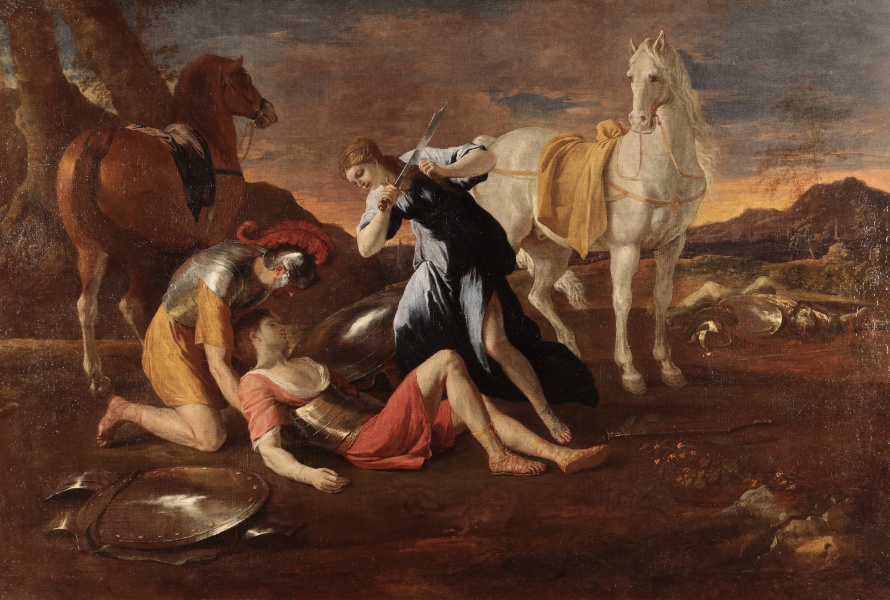 Nicolas Poussin. Tancred and Herminia. Oil on canvas. 98.5 × 147 cm
Nicolas Poussin. Tancred and Herminia. Oil on canvas. 98.5 × 147 cmThe outstanding French Classicist Nicolas Poussin produced his most lyrical paintings in the late 1620s and early 1630s. Among the best of them is Tancred and Herminia, with a subject inspired by the epic poem Jerusalem Delivered written by the 16th-century Italian poet Torquato Tasso. Poussin depicted Herminia, the daughter of the ruler of the Principality of Antioch, hastening to the aid of the crusader knight Tancred, who has been wounded in single combat with the giant Argant. Tancred’s devoted squire, Vafrin, is also tending to him. Herminia is cutting off her hair in order to bind up her beloved’s wounds. Her impulsive movement and the tender inclination of her head embody the idea of self-sacrifice for the sake of love. Emotionalism and a painterly softness in the handling of forms are characteristic only of a brief period in Poussin’s oeuvre. Later those qualities gave way to greater rationality and austerity.
This painting was acquired in Paris in 1766, from the collection of Jacques-André-Joseph Aved (1702–1766), a prominent artist, connoisseur and dealer in works of art, together with another by Poussin – Rinaldo and Armida (now in the Pushkin State Museum of Fine Arts) that was long considered a companion piece to Tancred and Herminia. The substantial sum of 2,400 livres was paid for the pair. The inventory of Aved’s collection drawn up after his death in 1766 lists them as “Two paintings depicting subjects from Tasso”.
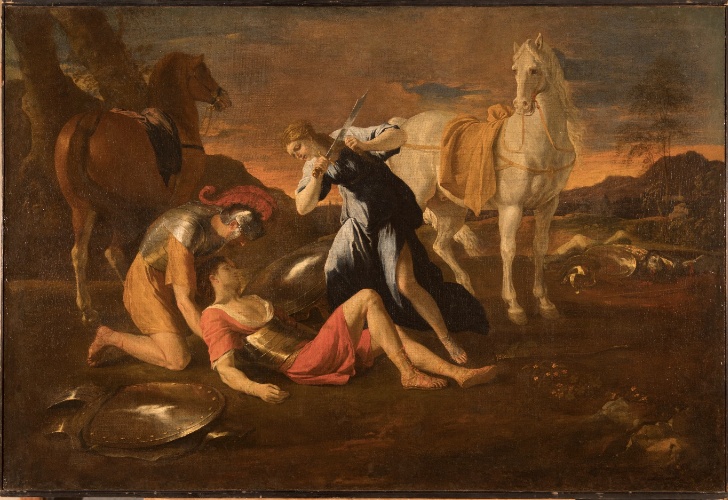 Before restoration
Before restorationThe painting came into the State Hermitage’s Laboratory for the Scientific Restoration of Easel Paintings from the display of 17th-century French painting.
A visual inspection revealed that the paintwork itself was in a technically satisfactory condition, but repeated interventions by restorers in the 19th and 20th centuries had led to the paint layer being covered by a thick layer of yellowed and clouded varnish that concealed the colouristic merits of the artist’s original work. As far back as 1854, the restorer Tabuntsov transferred the painting from its old canvas to a new one, which led to numerous small instances of flaking and of abrasions along the salient parts of the weave of the cloth, while on the left-hand side of the picture, on the depiction of the horse’s croup, a tear formed, resulting in the loss of part of the canvas together with the paintwork, which was restored in conjunction with lining with a linen canvas by A. Sidorov in 1861. In the 20th century, the work underwent repeated cosmetic restorations.
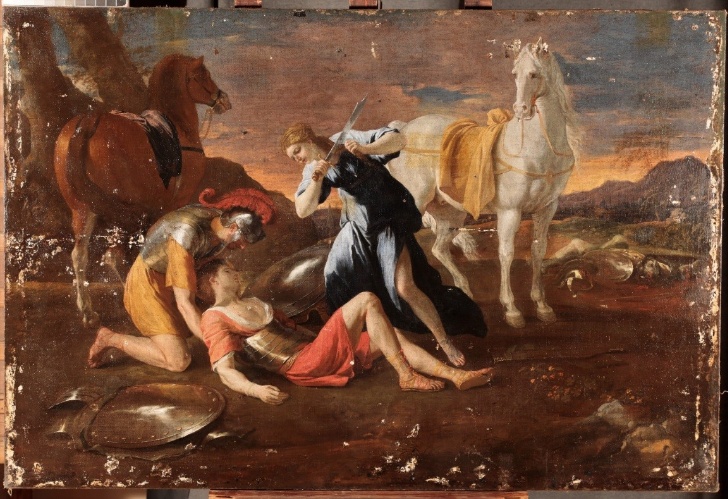 During the process of uncovering the paintwork
During the process of uncovering the paintworkRestoration
The restoration was carried out in three main stages. In the first, the picture was studied. An analysis of the paintwork in visible luminescence under ultraviolet rays revealed multiple instances of restoration repainting and overpainting located within the layers of varnish. Infrared reflectography showed up minor alterations made by the artist himself. X-ray fluorescence identified pigments characteristic of Poussin’s early works.
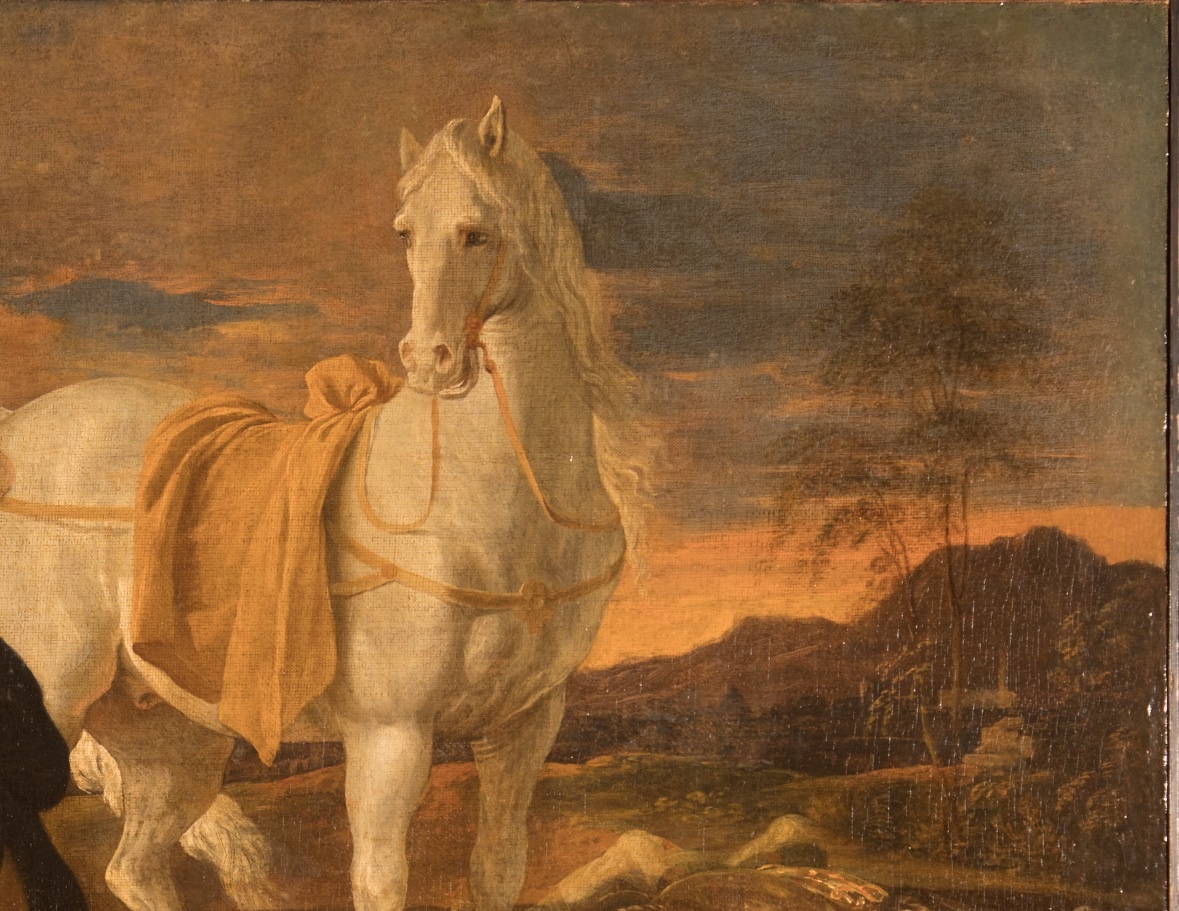 |
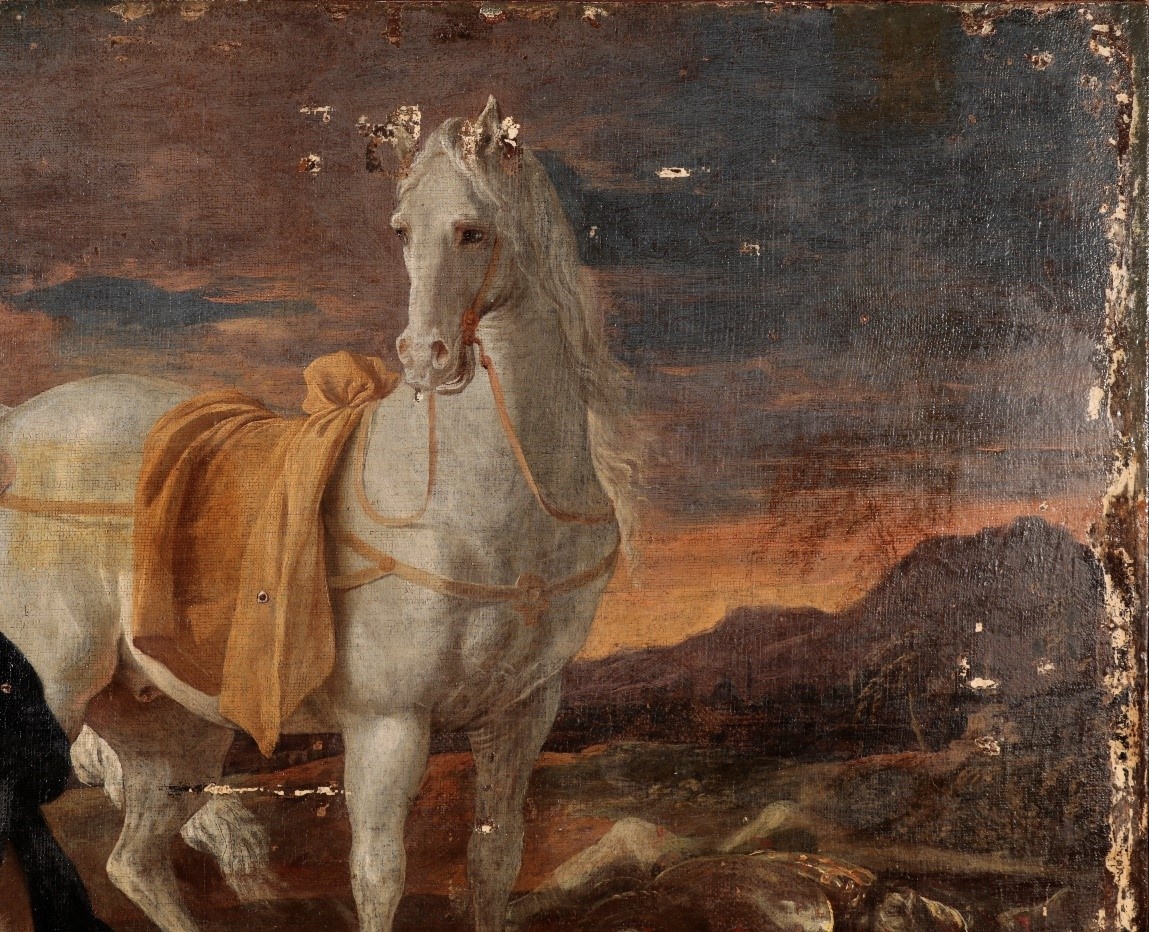 |
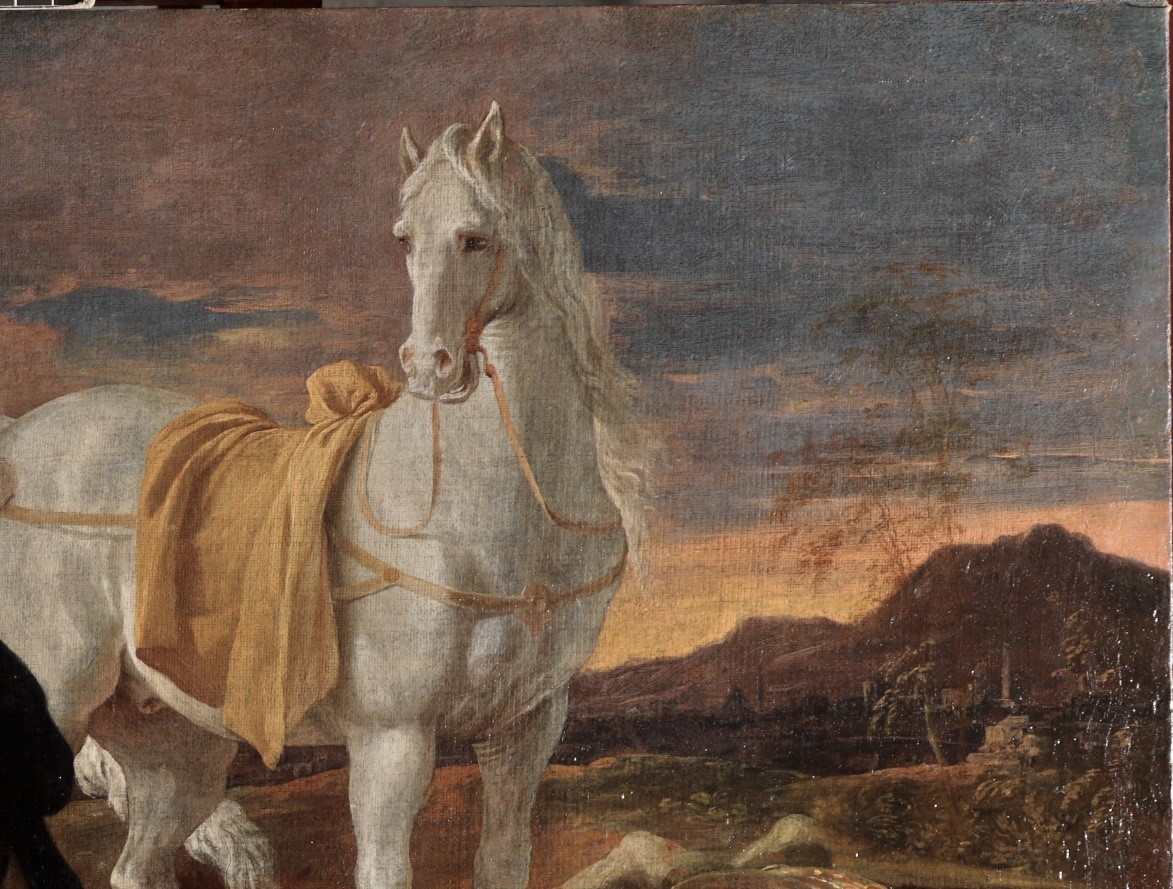 |
|
Detail. Before restoration
|
Detail. During the uncovering of the paintwork |
Detail. After restoration |
After the transparency of the varnish layer had been restored, the actual paint was first uncovered from yellowed varnish and restoration repainting in test areas. When the original paintwork had been completely freed from later accretions, numerous losses of in the paint layer were made good and the painting was coated with restoration varnish. The restoration succeeded in bringing back the initial colour scheme and revealing the chromatic relations in the original painting that were characteristic of the famous artist.
The restoration of the painting was carried out by a group of State Hermitage staff:
scholarly supervisor – Natalia Serebiannaya, keeper of the painting
co-ordinator – Yevgeny Feodorov, Head of the Project Finance Sector of the Development Service
curator – Victor Korobov, head of the Laboratory for the Scientific Restoration of Easel Paintings
artist-restorer – Alexei Nikolsky, from the staff of the Laboratory for the Scientific Restoration of Easel Paintings
The project was realized with the support of the company "Pernod Ricard".